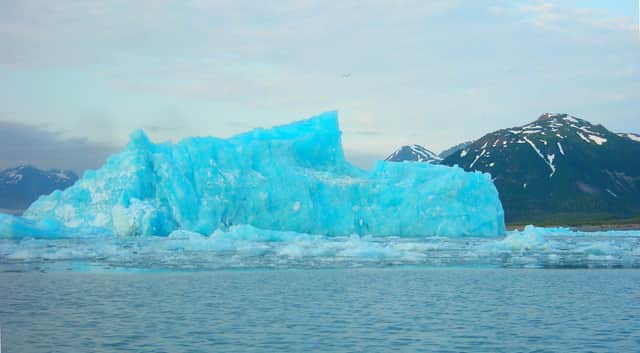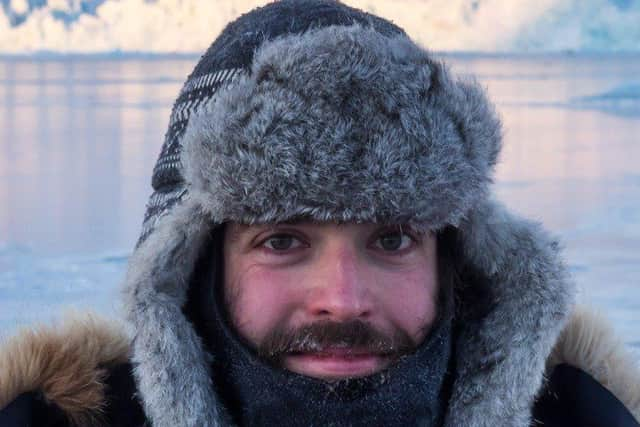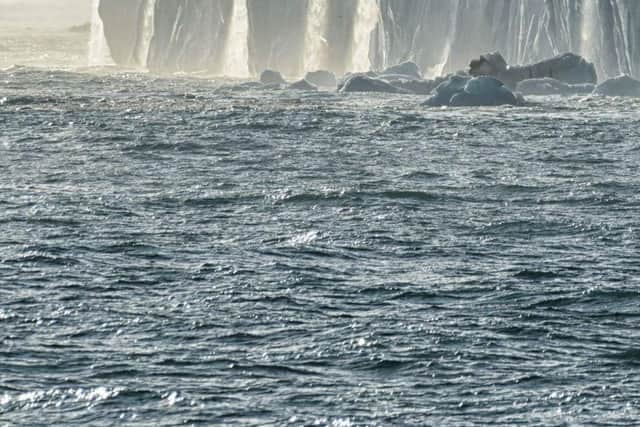International research study shows glacier retreat has grown


The study, co-authored by Dr Robert McNabb from Ulster University’s School of Geography and Environmental Sciences at Coleraine Campus, is the most comprehensive and accurate of its kind to date.
Glaciers are a sensitive indicator of climate change and one that can be easily observed.
Advertisement
Hide AdAdvertisement
Hide AdRegardless of altitude or latitude, glaciers have been melting at a high rate since the mid-20th century. Until now, the full extent of ice loss has only been partially measured and understood.


However an international research team led by ETH Zurich and the University of Toulouse, including Dr McNabb, has authored a comprehensive study on global glacier retreat which was recently published in Nature.
This is the first study to include all the world’s glaciers – around 220,000 – excluding the Greenland and Antarctic ice sheets.
The study’s spatial and temporal resolution is unprecedented and shows how rapidly glaciers have lost thickness and mass in two decades.
Advertisement
Hide AdAdvertisement
Hide AdWhat was once permanent ice has declined in volume almost everywhere around the globe.


Between 2000 and 2019, the world’s glaciers lost a total of 267 gigatonnes of ice per year on average – approximately 76 times the volume of Lough Neagh or enough to cover the island of Ireland in three metres of water every year.
The loss of glacier mass also accelerated sharply during this period. Between 2000 and 2004, glaciers lost 227 gigatonnes of ice per year, but between 2015 and 2019, the lost mass amounted to 298 gigatonnes annually.
Glacier melt caused up to 21% of the observed rise in sea levels during this period – some 0.74 millimetres a year.
Advertisement
Hide AdAdvertisement
Hide AdNearly half of the rise in sea levels is attributable to the thermal expansion of water as it heats up, with meltwaters from the Greenland and Antarctic ice sheets and changes in terrestrial water storage accounting for the remaining third.
Among the fastest-melting glaciers are those in Alaska, Iceland and the Alps.
Dr McNabb explained: “Glacier meltwater is an important water source in many regions such as High Mountain Asia or the Andes in South America. While increased glacier melt can provide extra water in these regions right now, it’s a diminishing return.
“If these trends continue in the future, it could lead to water and food shortages in regions that rely on meltwater runoff. Glacier melt is a key indicator of climate change, and our observations can be used to improve hydrological and glacier models, leading to more accurate predictions over the next few decades.”
Advertisement
Hide AdAdvertisement
Hide AdTo their surprise, the researchers also identified areas where melt rates slowed between 2000 and 2019, such as on Greenland’s east coast and in Iceland and Scandinavia.
They attribute this divergent pattern to a weather anomaly in the North Atlantic that caused higher precipitation and lower temperatures between 2010 and 2019, thereby slowing ice loss.
The researchers also discovered that the phenomenon known as the Karakoram anomaly is disappearing. Prior to 2010, glaciers in the Karakoram mountain range were stable – and in some cases, even growing. However, the researchers’ analysis revealed that Karakoram glaciers are now losing mass as well.
As a basis for the study, the research team used imagery captured on board NASA’s Terra satellite, which has been orbiting the Earth once every 100 minutes since 1999 at an altitude of nearly 700 kilometres.
Advertisement
Hide AdAdvertisement
Hide AdTerra is home to ASTER, a multispectral imager with two cameras that record pairs of stereo images, allowing researchers to create high-resolution digital elevation models of all the world’s glaciers.
The team used the full archive of ASTER images to reconstruct a time series of glacial elevation, which enabled them to calculate changes in the thickness and mass of the ice over time.
Together, the co-authors on the study spent over three years developing the techniques to process the satellite images, and 18 months analysing the data and results.
To process the data, the researchers used a supercomputer at the University of Northern British Columbia. Their findings will be included in the next Assessment Report of the United Nations Intergovernmental Panel on Climate Change (IPCC), which is due to be published later this year.
Advertisement
Hide AdAdvertisement
Hide AdCo-author Daniel Farinotti, Head of the glaciology group at ETH Zurich and the Swiss Federal Institute for Forest, Snow and Landscape Research WSL added: “Our findings are important on a political level.
“The world really needs to act now to prevent the worst-case climate change scenario.”
Alongside the University of Toulouse, ETH Zurich and Ulster University, other institutions that participated in the study include the University of Oslo in Norway and the University of Northern British Columbia in Canada.
A message from the Editor:
Thank you for reading this story on our website. While I have your attention, I also have an important request to make of you.
Advertisement
Hide AdAdvertisement
Hide AdIn order for us to continue to provide high quality and trusted local news on this free-to-read site, I am asking you to also please purchase a copy of our newspaper whenever you are able to do so.
Our journalists are highly trained and our content is independently regulated by IPSO to some of the most rigorous standards in the world. But being your eyes and ears comes at a price. So we need your support more than ever to buy our newspapers during this crisis.
With the coronavirus lockdown having a major impact on many of our local valued advertisers - and consequently the advertising that we receive - we are more reliant than ever on you helping us to provide you with news and information by buying a copy of our newspaper when you can safely.
You can also enjoy unlimited access to the best news from across Northern Ireland and the UK by subscribing to newsletter.co.uk
Advertisement
Hide AdAdvertisement
Hide AdWith a digital subscription, you can read more than five articles, see fewer ads, enjoy faster load times, and get access to exclusive newsletters and content. Visit https://www.newsletter.co.uk/subscriptions now to sign up.
Thank you